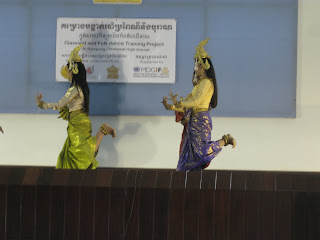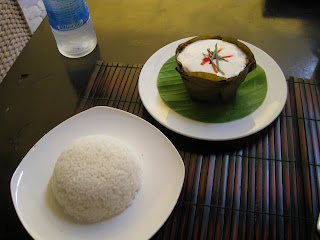
This morning I made my way to Phnom Penh's Central Market in search of a Cambodian cell phone. I tried to walk from my hotel, but after pulling out a cumbersome map and trying to orient myself, I couldn't avoid moto and tuk-tuk drivers for very long. I travelled to the market on the back of a moto in Phnom Penh traffic, which I realized works with no road rules.
Later, the tuk-tuk driver who brought me in from the airport last night, Yorn, took me to the Choeung Ek killing fields outside of Phnom Penh. The Khmer Rouge used Choeung Ek as the final deposition sight for many of the Cambodian prisoners' bodies. In the early 80s, excavators discovered around 8000 bodies in mass graves throughout the fields. Now the skulls and clothing fragments are preserved in a Buddhist stupa.




After visiting Choeung Ek, Yorn took me to the Tuol Sleng museum, also known as S-21. The Khmer Rouge converted the former school into a prison upon their rise to power in 1975. Most of the bodies discovered at Choeung Ek belonged to prisoners who at sometime lived in S-21. I found the disturbing part of S-21 to be the hundreds of prisoner mugshots. There were photos of children, elderly people, men and women, all of them with the same terrified expression. I didn't photograph anything inside the museum because the images in my mind's eye are haunting enough.

Outside of S-21. The gallows from which the Khmer Rouge hanged prisoners for torture are still standing.

Interrogation rules

Barbed wire to keep desperate prisoners from jumping
Needless to say, my afternoon of touring made me pretty depressed, especially after recently reading Loung Ung's memoir,
First They Killed My Father. It is so hard to believe that something as tragic as the Cambodian genocide goes mostly unobserved in western classrooms.
Tonight I met up for dinner with my friend from Colby, Natalie, who is also interning in Cambodia. As she told me on of her friends said, only at a school like Colby wold you find two kids interning in Cambodia at the same time.
Tomorrow I wil begin my work with Cambodian Living Arts. I still don't know what to expect, but with the festival quickly approaching I'm sure I will have lots of work to do.



















































